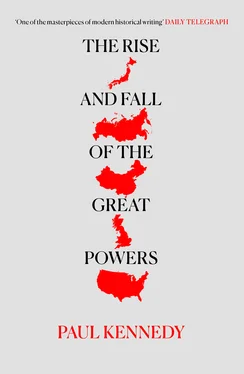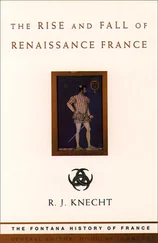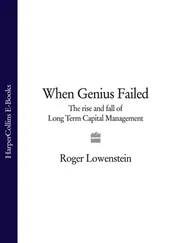Cromwell’s England of the 1650s could, however, play a Great Power role more successfully than any previous government. His New Model Army, which emerged from the civil war, had at last closed the gap that traditionally existed between English troops and their European counterparts. Organized and trained on modern lines established by Maurice of Nassau and Gustavus Adolphus, hardened by years of conflict, well disciplined, and (usually) paid regularly, the English army could be thrown into the European balance with some effect, as was evident in its defeat of Spanish forces at the battle of the Dunes in 1658. Furthermore, the Commonwealth navy was, if anything, even more advanced for the age. Favoured by the Commons because it had generally declared against Charles I during the civil war, the fleet underwent a renaissance in the later 1640s: its size was more than doubled from thirty-nine vessels (1649) to eighty (1651), wages and conditions were improved, dockyard and logistical support were bettered, and the funds for all this regularly voted by a House of Commons which believed that profit and power went hand in hand. 71 This was just as well, because in its first war against the Dutch the navy was taking on an equally formidable force commanded by leaders – Tromp and de Ruyter – who were as good as Blake and Monk. When the service was unleashed upon the Spanish Empire after 1655, it was not surprising that it scored successes: taking Acadia (Nova Scotia) and, after a fiasco at Hispaniola, Jamaica; seizing part of the Spanish treasure fleet in 1656; blockading Cádiz and destroying the flota in Santa Cruz in 1657.
Yet, while these English actions finally tilted the balance and forced Spain to end its war with France in 1659, this was not achieved without domestic strains. The profitable Spanish trade was lost to the neutral Dutch in these years after 1655, and enemy privateers reaped a rich harvest of English merchant ships along the Atlantic and Mediterranean routes. Above all, paying for an army of up to 70,000 men and a large navy was a costly business; one estimate suggests that out of a total government expenditure of £2,878,000 in 1657, over £1,900,000 went on the army and £742,000 on the navy. 72 Taxes were imposed, and efficiently extorted, at an unprecedented level, yet they were never enough for a government which was spending ‘four times as much as had been thought intolerable under Charles I’ before the English Revolution. 73 Debts steadily rose, and the pay of soldiers and sailors was in arrears. These few years of the Spanish war undoubtedly increased the public dislike of Cromwell’s rule and caused the majority of the merchant classes to plead for peace. It was scarcely the case, of course, that England was altogether ruined by this conflict – although it no doubt would have been had it engaged in Great Power struggles as long as Spain. The growth of England’s inland and overseas commerce, plus the profits from the colonies and shipping, were starting to provide a solid economic foundation upon which governments in London could rely in the event of another war; and precisely because England – together with the United Provinces of the Netherlands – had developed an efficient market economy, it achieved the rare feat of combining a rising standard of living with a growing population. 74 Yet it still remained vital to preserve the proper balance between the country’s military and naval effort on the one hand and the encouragement of the national wealth on the other; by the end of the Protectorate, that balance had become a little too precarious.
This crucial lesson in statecraft emerges the more clearly if one compares England’s rise with that of the other ‘flank’ power, Sweden. 75 Throughout the sixteenth century, the prospects for the northern kingdom looked poor. Hemmed in by Lübeck and (especially) by Denmark from free egress to western Europe, engaged in a succession of struggles on its eastern flank with Russia, and repeatedly distracted by its relationship with Poland, Sweden had enough to do simply to maintain itself; indeed, its severe defeat by Denmark in the war of 1611–13 hinted that decline rather than expansion would be the country’s fate. In addition, it had suffered from internal fissures, which were constitutional rather than religious, and had resulted in confirming the extensive privileges of the nobility. But Sweden’s greatest weakness was its economic base. Much of its extensive territory was Arctic waste, or forest. The scattered peasantry, largely self-sufficient, formed 95 per cent of a total population of some 900,000; with Finland, about a million and a quarter – less than many of the Italian states. There were few towns and little industry; a ‘middle class’ was hardly to be detected; and the barter of goods and services was still the major form of exchange. Militarily and economically, therefore, Sweden was a mere pigmy when the youthful Gustavus Adolphus succeeded to the throne in 1611.
Two factors, one external, one internal, aided Sweden’s swift growth from these unpromising foundations. The first was foreign entrepreneurs, in particular the Dutch but also Germans and Walloons, for whom Sweden was a promising ‘undeveloped’ land, rich in raw materials such as timber and iron and copper ores. The most famous of these foreign entrepreneurs, Louis de Geer, not only sold finished products to the Swedes and bought the raw ores from them; he also, over time, created timber mills, foundries, and factories, made loans to the king, and drew Sweden into the mercantile ‘world system’ based chiefly upon Amsterdam. Soon the country became the greatest producer of iron and copper in Europe, and these exports brought in the foreign currency which would soon help to pay for the armed forces. In addition, Sweden became self-sufficient in armaments, a rare feat, thanks again to foreign investment and expertise. 76
The internal factor was the well-known series of reforms instituted by Gustavus Adolphus and his aides. The courts, the treasury, the tax system, the central administration of the chancery, and education were but some of the areas made more efficient and productive in this period. The nobility was led away from faction into state service. Religious solidarity was assured. Local as well as central government seemed to work. On these firm foundations, Gustavus could build a Swedish navy so as to protect the coasts from Danish and Polish rivals and to ensure the safe passage of Swedish troops across the Baltic. Above all, however, the king’s fame rested upon his great military reforms: in developing the national standing army based upon a form of conscription, in training his troops in new battlefield tactics, in his improvements of the cavalry and introduction of mobile, light artillery, and finally in the discipline and high morale which his leadership gave to the army, Gustavus had at his command perhaps the best fighting force in the world when he moved into northern Germany to aid the Protestant cause during the summer of 1630. 77
Such advantages were all necessary, since the dimensions of the European conflict were far larger, and the costs far heavier, than anything experienced in the earlier local wars against Sweden’s neighbours. By the end of 1630 Gustavus commanded over 42,000 men; twelve months later, double that number; and just before the fateful battle of Lützen, his force had swollen to almost 150,000. While Swedish troops formed a corps d’élite in all the major battles and were also used to garrison strategic strongpoints, they were insufficient in number to form an army of that size; indeed, four-fifths of that ‘Swedish’ army of 150,000 consisted of foreign mercenaries, Scots, English, and Germans, who were fearfully expensive. Even the struggles against Poland in the 1620s had strained Swedish public finance, but the German war threatened to be far more costly. Remarkably, however, the Swedes managed to make others pay for it. The foreign subsidies, particularly those paid by France, are well known but they covered only a fraction of the costs. The real source was Germany itself: the various princely states, and the free cities, were required to contribute to the cause, if they were friendly; if they were hostile, they had to pay ransoms to avoid plunder. In addition, this vast Swedish-controlled army exacted quarter, food, and fodder from the territories on which it was encamped. To be sure, this system had already been perfected by the emperor’s lieutenant, Wallenstein, whose policy of exacting ‘contributions’ had financed an imperial army of over 100,000 men; 78 but the point here is that it was not the Swedes who paid for the great force which helped to check the Habsburgs from 1630 until 1648. In the very month of the Peace of Westphalia itself, the Swedish army was looting in Bohemia; and it was entirely appropriate that it withdrew only upon the payment of a large ‘compensation’.
Читать дальше












